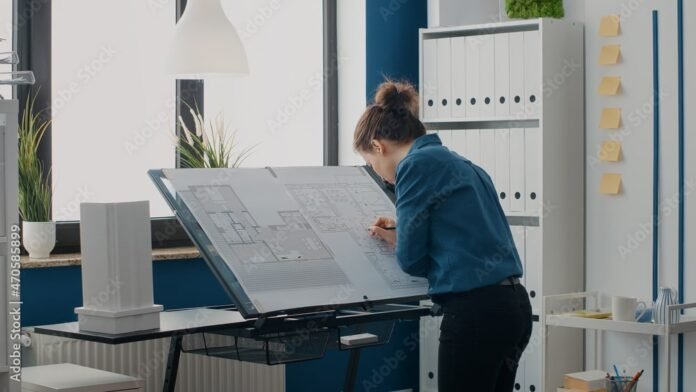Within the ever-changing landscape of commercial construction, the design-build methodology has risen to prominence as a game-changing technique that streamlines the entire development process, from its initial conception through to its final completion. This cohesive and integrated method offers a vast range of benefits that are tailored to address the specific requirements and desires of businesses and their commercial projects, making it the go-to option for an extensive variety of building ventures.
Streamlining the Process
At the core of the design-build philosophy is the seamless integration of design and construction services under one entity. Unlike the traditional design-bid-build model where clients manage separate contracts for design and construction, design-build condenses the process into a single, unified team. This holistic collaboration ensures that the vision conceived during the design phase aligns seamlessly with the practicalities of construction, eliminating potential discrepancies and delays.
Architects and Builders Working in Tandem
One of the primary advantages of design build construction in the commercial sector lies in its ability to foster collaboration between architects and builders. With both disciplines operating under the same umbrella, communication flows more smoothly. Architects can directly engage with construction professionals, ensuring that design intent is not lost in translation. This collaborative synergy promotes innovation, problem-solving, and a more cohesive execution of the project vision.
A Unified Approach to Budgeting and Scheduling
Efficiency is a hallmark of design-build construction, particularly concerning time and cost management. The integrated nature of the process enables early collaboration between the design and construction teams, allowing for real-time budgeting and scheduling. With a unified vision and a clear understanding of project constraints, design-build projects often proceed more swiftly, minimizing delays and reducing the likelihood of unforeseen costs.
Simplifying Project Management
Design-build simplifies the project management landscape by providing clients with a single point of responsibility. Rather than juggling various contracts, stakeholders, and potential disputes between architects and contractors, clients can rely on a unified team to manage every aspect of the project. This not only streamlines decision-making but also reduces the administrative burden on clients, allowing them to focus on their core business concerns while the design-build team navigates the complexities of construction.
Tailoring Spaces to Commercial Needs
Commercial spaces often demand a level of customization that traditional construction models may struggle to accommodate. Design-build, however, thrives on flexibility. The collaborative nature of the approach allows for real-time adjustments to the design and construction process. Whether responding to changes in market trends or accommodating evolving business needs, the adaptability of design-build ensures that commercial spaces can be tailored to suit the dynamic requirements of their occupants.
Identifying and Addressing Challenges Early On
In the intricate dance of construction, challenges are inevitable. The design-build model excels in identifying and addressing potential issues early in the process. With architects and builders working collaboratively, there is a collective focus on problem-solving and risk mitigation. This proactive approach minimizes the likelihood of costly surprises later in the project, fostering a more transparent and cooperative atmosphere throughout construction.
Bridging the Gap Between Vision and Execution
Effective communication is the linchpin of successful commercial construction projects. Design-build bridges the gap between design professionals and construction teams, ensuring that the intricate details envisioned during the design phase are clearly communicated and executed on-site. This enhanced communication not only reduces the likelihood of errors but also contributes to a smoother construction process, fostering a more cohesive and efficient project execution.
Maintaining Standards Throughout the Project
Maintaining consistent quality standards is a paramount concern in commercial construction. Design-build, with its integrated approach, facilitates stringent quality control throughout the project lifecycle. From the conceptualization of design elements to the selection of construction materials and methods, the unified team ensures that the project adheres to the highest standards of quality. This dedication to excellence is particularly crucial in the commercial sector, where the durability and functionality of a space are integral to its success.
Collaborative Decision-Making Throughout the Project
Design-build empowers clients by involving them in the decision-making process at every stage of the project. Unlike the traditional model where clients may have limited engagement after the design phase, design-build encourages ongoing collaboration. Clients can provide input, make decisions, and receive real-time updates, ensuring that the final product aligns with their vision and meets their expectations.
A Holistic Approach to Project Delivery
Ultimately, the design-build model is not just about constructing a building; it’s about delivering value. By integrating design and construction services, design-build maximizes value for commercial clients. From cost-effective solutions to efficient project timelines and the delivery of high-quality spaces, the holistic approach of design-build ensures that every aspect of a project contributes to its overall value proposition.
Eco-Friendly Commercial Construction Practices
In an era where sustainability is paramount, design-build extends its advantages to eco-friendly commercial construction. The integrated model allows for the seamless incorporation of sustainable practices from the initial design phase to construction execution. This includes the selection of environmentally friendly materials, energy-efficient systems, and waste reduction strategies. Design-build’s collaborative nature ensures that sustainability goals are woven into the fabric of the project, aligning with the growing demand for green and responsible construction practices.
Integrating Cutting-Edge Solutions
As technology continues to shape the future of construction, design-build is at the forefront of integrating cutting-edge solutions. This includes the use of advanced construction technologies, Building Information Modeling (BIM), and virtual reality tools. The collaborative environment of design-build facilitates the adoption of these innovations, enhancing the precision and efficiency of the construction process. From virtual walkthroughs to real-time project updates, technology integration is a hallmark of design-build’s commitment to delivering modern and innovative commercial spaces.
In conclusion, the advantages of design-build construction for commercial projects are vast and varied. From sustainability integration and technological innovation to the traditional strengths of streamlined processes and enhanced collaboration, design-build stands as a comprehensive and forward-thinking approach to commercial construction. As businesses seek dynamic and efficient solutions for their built environments, design-build continues to prove its efficacy in delivering successful and value-driven projects.




